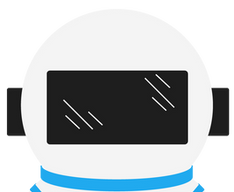Experiencing the world's heritage sites in your own living room with hologram computer
Wat Chai Watthanaram from Thailand, a heritage site in Hologram created in a DesktopAR system using Holo-SDK
Tourism and hospitality have stalled since the COVID19 pandemic started. But it is not all doom and gloom as the continuous advancement of immersive technology such as virtual reality headsets and augmented reality glasses that makes digital tourism possible. In this article, we will discuss about how we can bring the world of tourism back into your living room using a home-made holographic system known as Desktop Virtual Reality system or DesktopAR.
Key discussion:
- Virtual Tourism by a home-made DesktopAR system
- The growth of 3D Digital models of the heritage sites and museum collections
- Opportunities for VR/AR developers
The DesktopAR is so simple that you can make it at home! You can create your own virtual tourism
Many different VR/AR headsets are now available in the market. The headset allows the users to be in the environment as if they are immersed in the real environment. Other types of VR systems are a hologram, which the users can view 3D models from any angle without any headwears. However, holographic devices are still expensive to be invested at home.
But the DesktopAR technology allows you to create a holographic illusion easily at home by turning your normal PC or laptop into 3D holographic displays. The DesktopAR technology works by rendering images on the display according to the user's viewing positions so the 3D models displayed on the screen are not distorted and appear to be more real. To convert your computer screen to holographic display, you need a webcam and Holo-SDK. Holo-SDK sends the user's positions, which are used to rectify displayed images on the screen to create the holographic effects for that user. The users are required to wear red and blue glasses to see the 3D holographic effects on the screens. This enables anyone to make a holographic computer in their own home without having to buy any additional hardware. To learn more about how DesktopAR works, visit Holo-SDK.
The fast-growing collections of 3D models of the world's heritage sites and ancient artefacts around the world.
Having a holographic system alone is not sexy without an eye-catching and meaningful model to visualize! Luckily, tourist attractions around the world, especially heritage sites, are now digitised and can be integrated and used as digital contents for the holographic systems. For an example, Open Heritage, the website that provides digitised models of iconic monuments and historical places around the world. Another example is a collection from British Museum, here you can find over 200+ model of rare artefacts. All of the models are digitized in fine detail and some even provide narration describing artefacts as if we are inside the museum! Combining the 3D models and the holographic system, you can get a unique tourist experience of iconic sites and museum at home!
Credit: British Museum Collection by Sketfab
GOLD RUSH for VR/AR developers! A new opportunity to make many cool applications in an untapped virtual reality ecosystem.
The VR/AR market is booming and will continue to grow in a post-covid world. The reason is the emerging holographic technology and the digitization of real-world objects using mobile devices. The latest iPhone 12 has a Lidar sensor, which allows the users to make 3D models of any objects from your phone. The 3D digital contents are, therefore, growing. And all of these 3D contents are already used widely in the VR/AR headsets and they can be just plugged into holographic systems with no conversion costs. So it is now a big opportunity for VR/AR developers to make applications with the new holographic system. Certainly, the applications related to traveling seems to be one of the best sectors to start when people cannot travel the world.
Credit: www.sketchfab.com
With the Holo-SDK, you can make your own holographic application today. With your holographic apps, you literally can bring the future into reality. Imagine a holographic application that gives you a 3D map of a city when you are bag-packing or a holographic visualization of heritage sites in your history class.
Get Holo-APP here: https://www.holo-sdk.com/sample-apps
Get Holo-SDK here: https://www.holo-sdk.com Follow us of Facebook: https://www.facebook.com/PerceptionHoloSDK
Follow us of Twitter: https://twitter.com/PerceptionCodes
Follow us on YouTube: https://www.youtube.com/channel/UCsiRcn3XRJQsAUoWmQQH9Rg


Commentaires